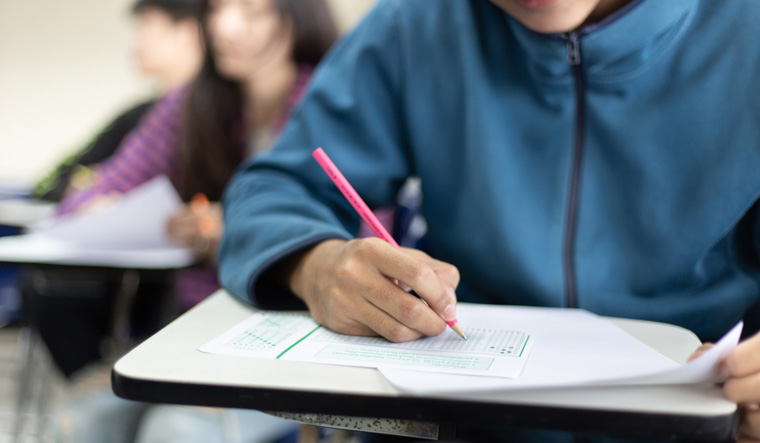Vikas Asrani (name changed), 26, is pursuing a masters degree in an East Coast university in the US. When the lockdown began, he had considered returning to India, but decided to stay back, attending lectures online till normal teaching resumed. However, he is now scrambling for a Vande Bharat Mission flight to return home before his stay is declared unlawful and the authorities take action to deport him.
On Monday, the Student and Exchange Visitor Programme (SEVP) of the US government announced modifications to temporary exemptions, saying non-immigrant F-1 and M-1 students attending schools operating entirely online may not take a full online course and remain in the United States. “The US department of state will not issue visas to students enrolled in schools and/or programmes that are fully online for the fall semester, nor will the US Customs and Border Protection permit these students to enter the US. Active students currently in the US enrolled in such programmes must depart the country or take other measures, such as transferring to a school with in-person instruction to remain in lawful status. If not, they may face immigration consequences, including, but not limited to, the initiation of removal proceedings.''
The F-1 visa is for non-immigrant students pursuing academic coursework, while the M-1 visa is for those pursuing vocational coursework while studying in the US.
Asrani is stunned by the development. Had he known this is how the fall semester would be, he would have made plans to return home on an early repatriation flight, or maybe even in March before the lockdown began. One of the reasons he wanted to remain in the US was the time difference between the two countries, which would have made it tough for him to attend classes online in India. Besides, there was the hope that the teaching in the fall semester would be a mixed one, with a few in-person classes as well. Although there is the option to find another course, which would have offline content, it would have been difficult to find such a course at a time like this. There is also the added worry of bearing the additional cost for another course.
He is now anxiously awaiting announcement from his college on what component of his fall semester will be online. However, even if there are some in-person classes, which will allow students to stay back, there will always be that anxiety about another change in government rule.
What worries the students about leaving the US is the fear that they may not be able to come back to the country anytime soon. They were still in the hope that normalcy would be restored, and they would have the work visa that students usually get after their courses are over, to stay back and earn some money and offset the loans they took for the course.
However, the situation has changed dramatically. First, US President Donald Trump announced cancellation of several work visas, including the H1-B. This not only scuttled the plans of many aspirants, but has also caused a crisis among those whose visas have expired. Infosys has just chartered a flight to bring back many such employees and their families. Secondly, there seems to be no certainty about when things would return to normalcy as the number of cases and hotspots continue to rise. The US remains the country with the maximum number of cases and death toll.
The US government circular adds that F-1 students attending schools adopting a hybrid model —mix of online and in-person classes—will be allowed to take more than one class or three credit hours online. Such schools have to issue a certificate for their students saying the teaching programme is not entirely online, and that the student is taking the minimum number of online classes required to make normal progress in their degree programme.
Because of the pandemic, the SEVP had made a temporary exemption regarding online course for spring and summer semesters, allowing students to stay in the US. The standard policy, however, is that for courses that are now entirely online, students cannot stay in the US. The government has emphasised that if students find themselves in a situation where their classes have become entirely online, they must leave the country or take alternative steps to maintain their non-immigrant status such as a reduced course load or appropriate medical leave.



